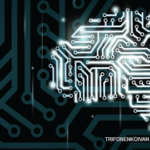Watson’s strength is its ability to analyze and comprehend massive reams of data and then apply this information to find the needles in the haystack. This mastery has captured the attention of the biopharmaceutical industry. For example, Watson was challenged by several oncologists at Baylor to predict which kinases could phosphorylase the p53 protein, a critical element for cancer drug discovery. Provided with a set of human kinases that can phosphorylate p53, Watson used text mining to read all, yes all, known papers on the topic of kinases and, in a few weeks, identified two new kinases that possessed this capability.8 In another exercise, Watson identified 15 drug candidates that could be repurposed to treat malaria. Similarly, this project took less than one month while it required 10 scientists to spend more than 14 months to identify a similar number of drug candidates.8
Watson shows promise in other medical fields. Having been fed an astounding 30 billion images to store, it has acquired a deep understanding of radiology. Watson can identify a pulmonary embolism on computed tomography imaging of the chest or abnormal wall motion on echocardiography. Reading radiographs and magnetic resonance imaging is elementary for Watson. It is also making waves in pathology, because its abilities to download an unlimited number of images make it adept at detecting cancerous cells or many other unusual histologic findings that a tired technician battling fatigue may overlook.
The rapid progress in AI achieved in the past few years is equally exciting and terrifying to clinicians and researchers. Algorithm-based software programs can reliably perform a variety of tasks that were once time consuming and prone to error. The ability to accurately parse through gigabytes of data in seconds opens many new frontiers, but creates some new stresses. Just as robots are replacing factory workers on assembly lines, shouldn’t scientists be wary of the advancing army of AI devices that have the capability of replacing them in the lab or the clinic? One day, will Watson or some similar AI device put us all out of work?
The Pigeon Will See You Now
Fear not just the robot. For pathologists and radiologists, another terror lurks in the skies. Pigeons. Yes, pigeons—those unadorned birds of flight whose notoriety for plastering parked cars with their poop have made them a public enemy in some quarters—have some wondrous analytical skills. Seriously, pigeons carry an illustrious scientific pedigree. As one of Charles Darwin’s favorite species, Columba livia, they played a critical role in the formulation of his theories about evolution in On the Origins of Species.9 Their skills as homing pigeons have been put to good use in times of battle. During World War II, in the days before satellites and global positioning tracking devices, pigeons were routinely carried by Royal Air Force bombers in case of a crash. They would then be released with the hope that they could fly home to their loft at an air base and alert others to the crew’s predicament.10

